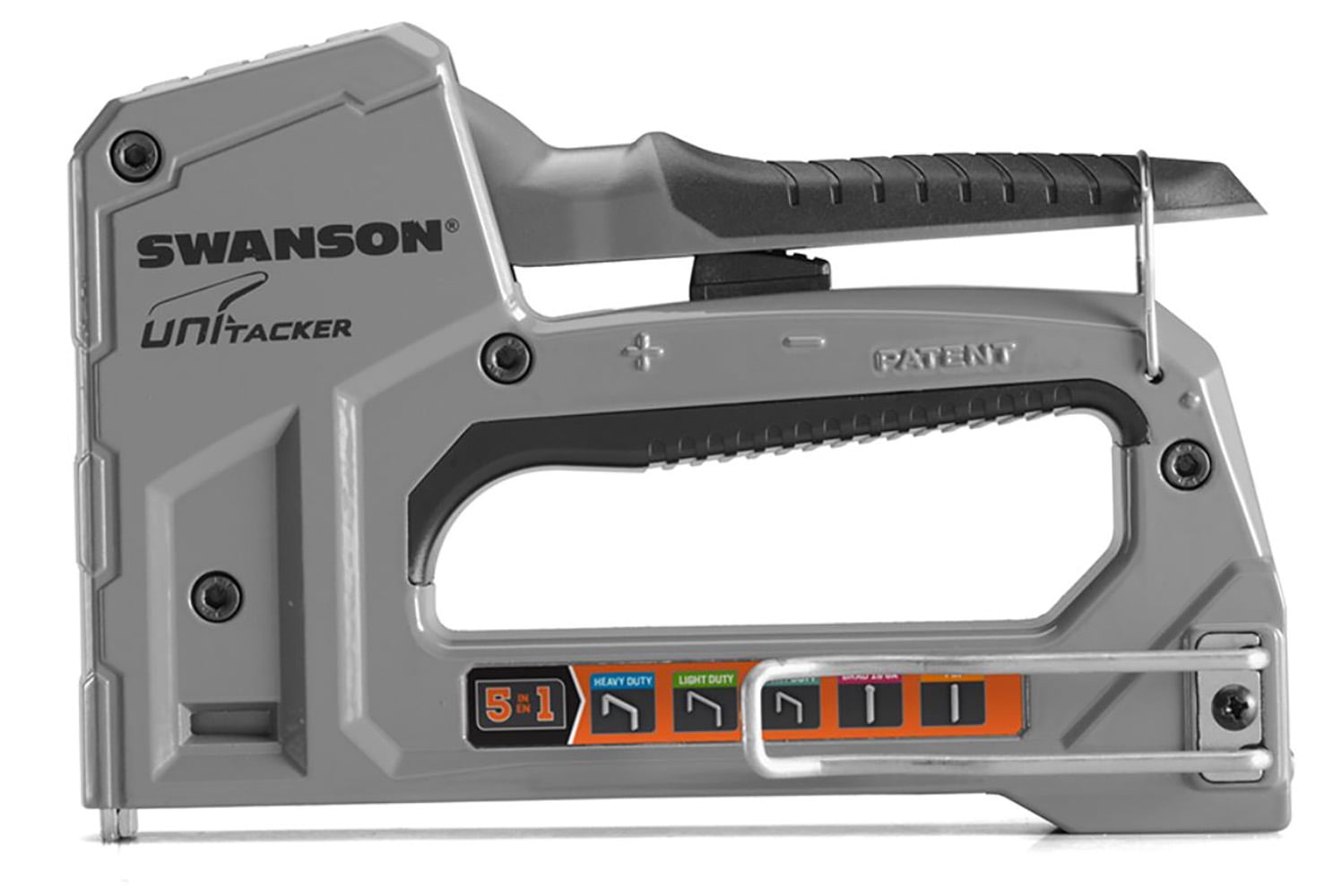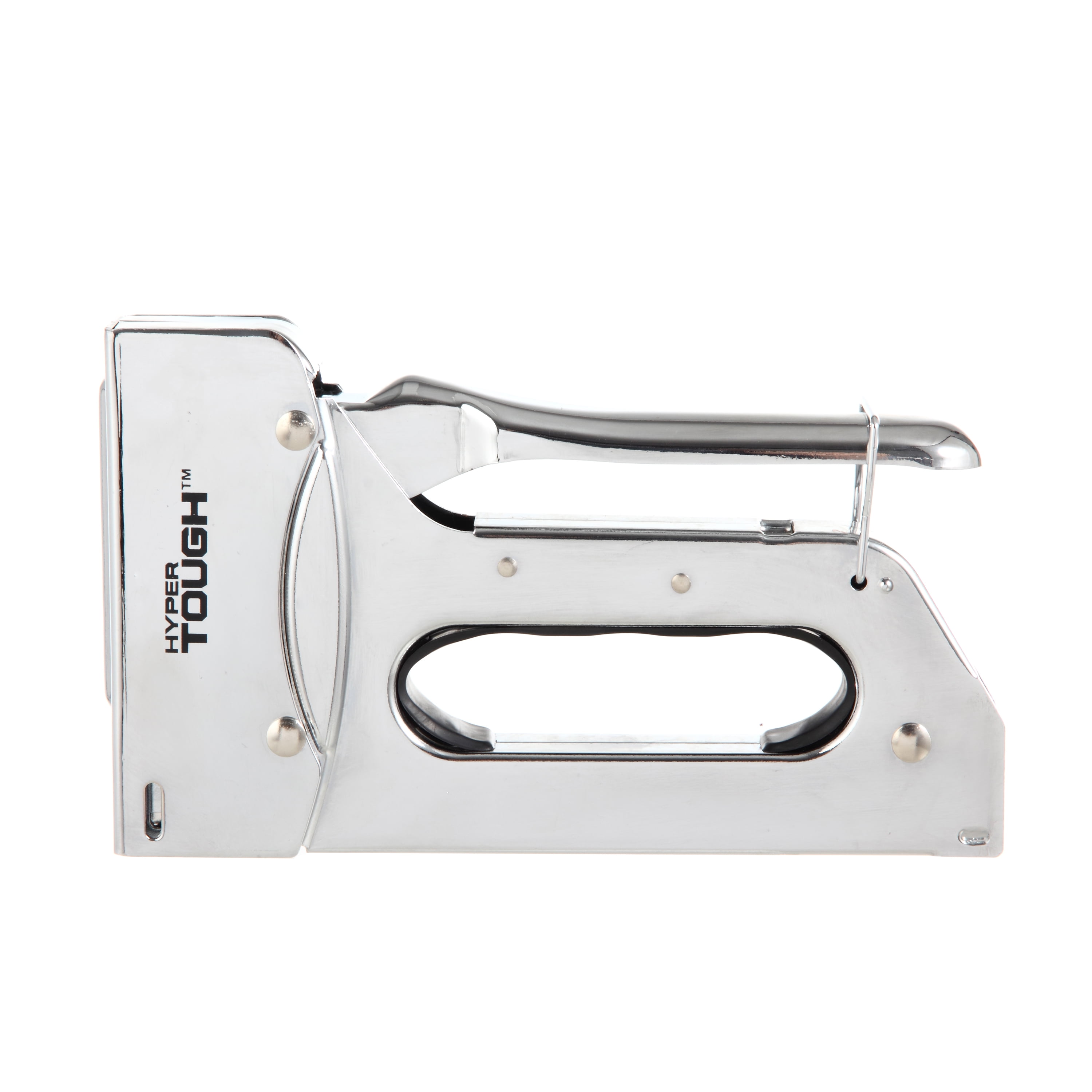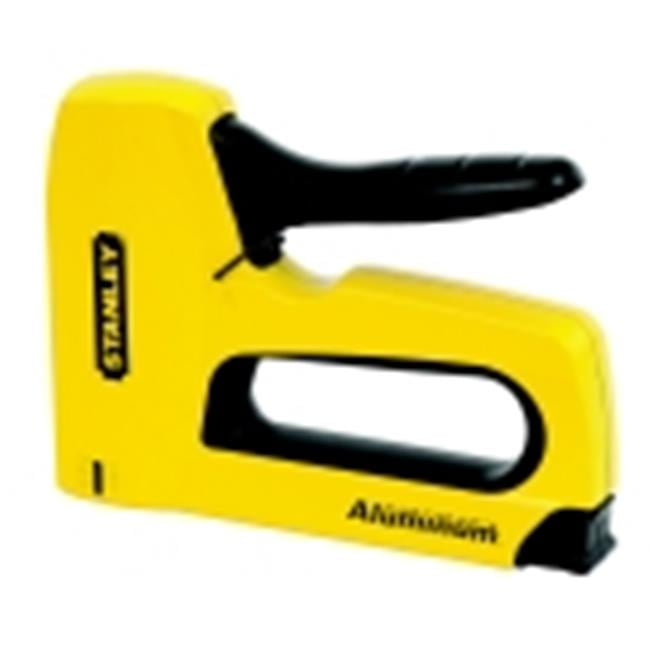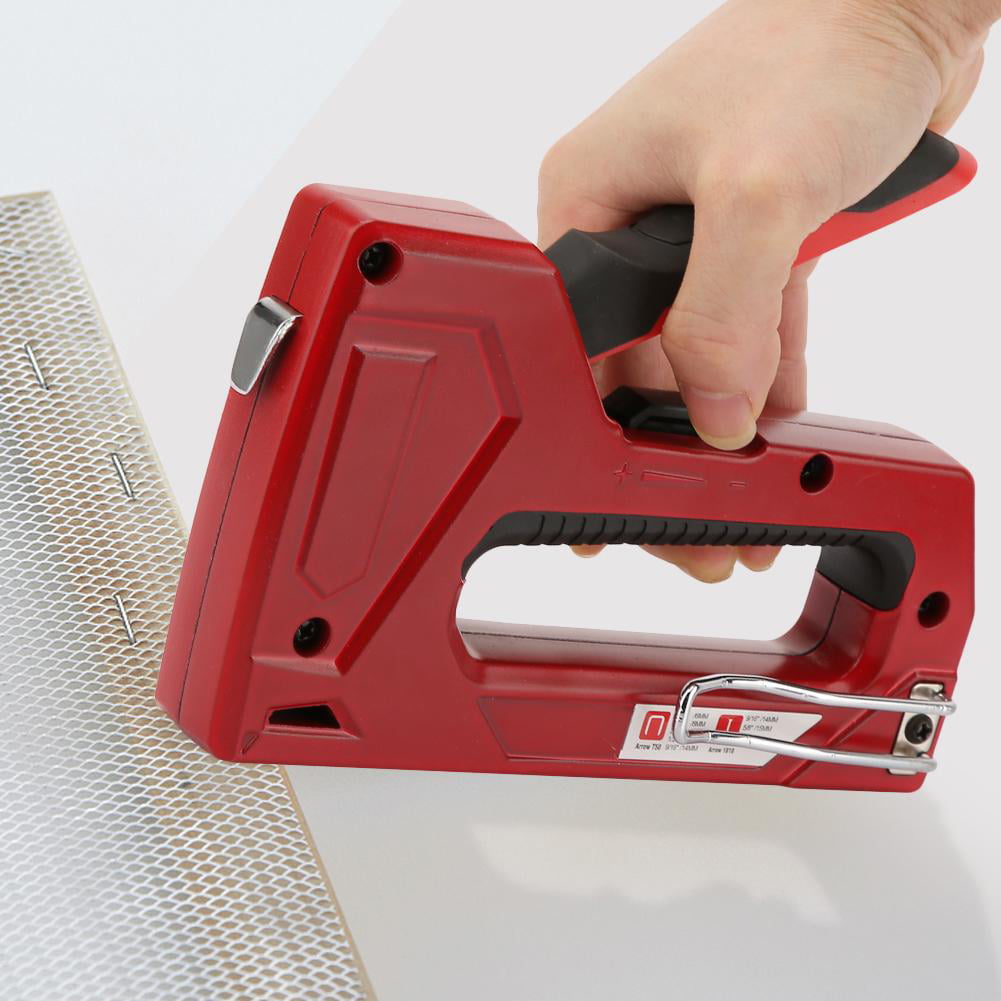
Before deciding on a model, make sure it will accept the type of staples you’ll be using. There are three main types of staples that you can use in staple guns: D-type, U-type, and T-type. You need to purchase staples in order for your staple gun to work. When purchasing a staple gun, there are a few additional items that you’ll need as well as others you may want to have on hand. Typically, these kits include the staple gun, staples, a case, and a staple remover, so you'll have everything you need to get working. Since so many companies manufacture staple guns, some try to be more appealing to the homeowner by offering bundles. Ideally, some padding or at least a nonslip handle is also a good idea.
Wal mart heavy duty staple gun jam manual#
Grip: You will want a staple gun with a comfortable, ergonomic grip, especially if you’re purchasing a manual model. It’s a very simple tool, so there is no need to purchase one that overly complicates any aspect of its operation.

ErgonomicsĮase of use: From loading to adjusting the tension to stapling, you want a staple gun that is easy to operate. This feature is not available on manual models, but if it’s something you would benefit from, seek an electric or pneumatic staple gun that has this advanced feature. Many of the manual staple guns require firing a staple before locking because the handle locks in the down position.īump trigger: A bump trigger is a special mode that allows you to fire staples rapidly just by pressing the staple gun down on a surface while holding the trigger. Trigger lock: You want a staple gun with a trigger lock to prevent accidental firing. Alternatively, you can use this control to lessen the tension in case the staples are being driven too hard and tearing through the fabric or other material that you’re attempting to attach. Tension: The best staple guns feature a knob or some other device that allows you to quickly change the tension on the spring in case the staples are not going in all the way. These types of staple guns are best for shingles and flooring, though smaller models may come in handy when upholstering.īesides deciding on the type of staple gun that you need, there are a few other elements to consider before settling on the ideal model for you. The user swings it somewhat like a hammer, only instead of sinking nails, when the unit comes in contact with a surface it embeds a staple. This type of staple gun is also manually operated. Because these staple guns need to be attached to an air compressor, they have the greatest limitations when it comes to mobility. These are extremely powerful, heavy-duty units that are often seen on construction sites. Pneumatic staple guns are driven by compressed air. Also, it’s important to note that electric staple guns tend to be a little more accurate than manual staple guns. It’s also good for when you’re stapling in areas where you can't apply much force manually, such as stapling upward. This type of staple gun does the work for you, so it’s ideal for tasks that require a great deal of stapling. ElectricĪn electric staple gun can be plugged in or run off a battery.


About the only downside to this type of staple gun is that your hand will fatigue rather quickly, so it can be difficult to do large jobs in one session. When you squeeze the handle, you compress a spring that eventually releases to forcefully eject a staple. ManualĪ manual staple gun requires no power source other than you. However, there are a few other types available, and to be sure you’re getting the one that’s best for you, you need to know your options. In most instances, that’s all the average homeowner needs. When most people think about purchasing a staple gun, they likely picture a manual staple gun, one where all the power is provided by squeezing.

Most staple guns differ from office staplers in that they don’t bend the staple they just drive it straight in.


 0 kommentar(er)
0 kommentar(er)
